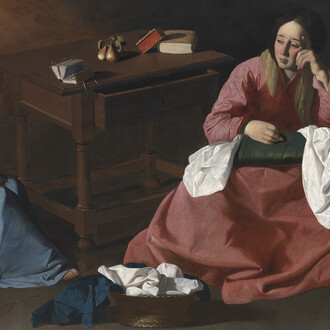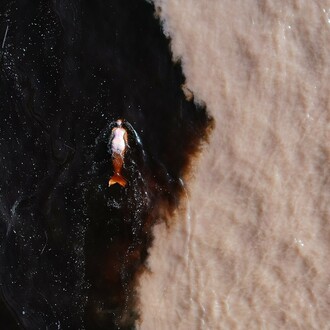The MAC is presenting a major new film work Drifting the Bann by Barbara Freeman, a Belfast-based artist known primarily for her work in printmaking and painting but who has also explored her ideas in sculpture, installation, and sound. The making of this film premiere has been made possible through the Arts Council of Northern Ireland’s Major Artists Award.
Freeman has often created visual and auditory installations responding to particular sites both as physical spaces and sonic environments. In this work premiering at the MAC, the artist tracks the course of the River Bann as it winds its way from the southeast corner of Northern Ireland to the northwest coast. Focusing on a geographic, historic or industrial feature that brings the river to life the work showcases iconic places from the dying oaks on Rams Island and the Gaelic rebellion of 1641 at Portadown, to the tradition of eel fishing at Toome. The soundscapes the artist employs begin with original field recordings, usually of water, bird or insect song, which are then interwoven with instrumental sounds and human voice. At times sounds from earlier parts of the film are heard again at later stages, in the distance, like an echo from the past.
The MAC is presenting a major new film work Drifting the Bann by Barbara Freeman, a Belfast-based artist known primarily for her work in printmaking and painting but who has also explored her ideas in sculpture, installation, and sound. The making of this film premiere has been made possible through the Arts Council of Northern Ireland’s Major Artists Award.
Freeman has often created visual and auditory installations responding to particular sites both as physical spaces and sonic environments. In this work premiering at the MAC, the artist tracks the course of the River Bann as it winds its way from the southeast corner of Northern Ireland to the northwest coast. Focusing on a geographic, historic or industrial feature that brings the river to life the work showcases iconic places from the dying oaks on Rams Island and the Gaelic rebellion of 1641 at Portadown, to the tradition of eel fishing at Toome. The soundscapes the artist employs begin with original field recordings, usually of water, bird or insect song, which are then interwoven with instrumental sounds and human voice. At times sounds from earlier parts of the film are heard again at later stages, in the distance, like an echo from the past.
Noirin McKinney, Director of Arts Development at the Arts Council, commented: “Every year the Arts Council presents a small number of Major Individual Awards to established artists who have made a notable contribution to the arts in Northern Ireland. The aim of the scheme is to allow these artists to benefit from being able to spend a dedicated time concentrating purely on their new projects with the financial backing needed to produce work of lasting value. It is with great pleasure that we can now look forward to the opening of Barbara’s exhibition at the MAC and the presentation of a significant work from her in a new medium.”















